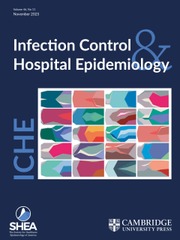Article contents
Surveillance for Quality Assessment: II. Surveillance for Noninfectious Processes: Back to Basics
Published online by Cambridge University Press: 21 June 2016
Extract
The first article in this series reviewed the type of surveillance currently used by most of the infection surveillance and control programs in acute care hospitals in the United States. Five components were identified as critical to the widespread acceptance and continuing success of this surveillance methodology: targeting of events (diseases); early development of standardized definitions; wide acceptance of the criteria for these definitions; advocacy, leadership and education in methodology; and a high level of effectiveness in program practice. Using the framework of these key components, this article will discuss the potential for the application of similar methodology to noninfectious nosocomial adverse events and explore some current successes and problems associated with surveillance for such events.
Information
- Type
- Topics in Clinical Epidemiology
- Information
- Copyright
- Copyright © The Society for Healthcare Epidemiology of America 1990
References
- 4
- Cited by

